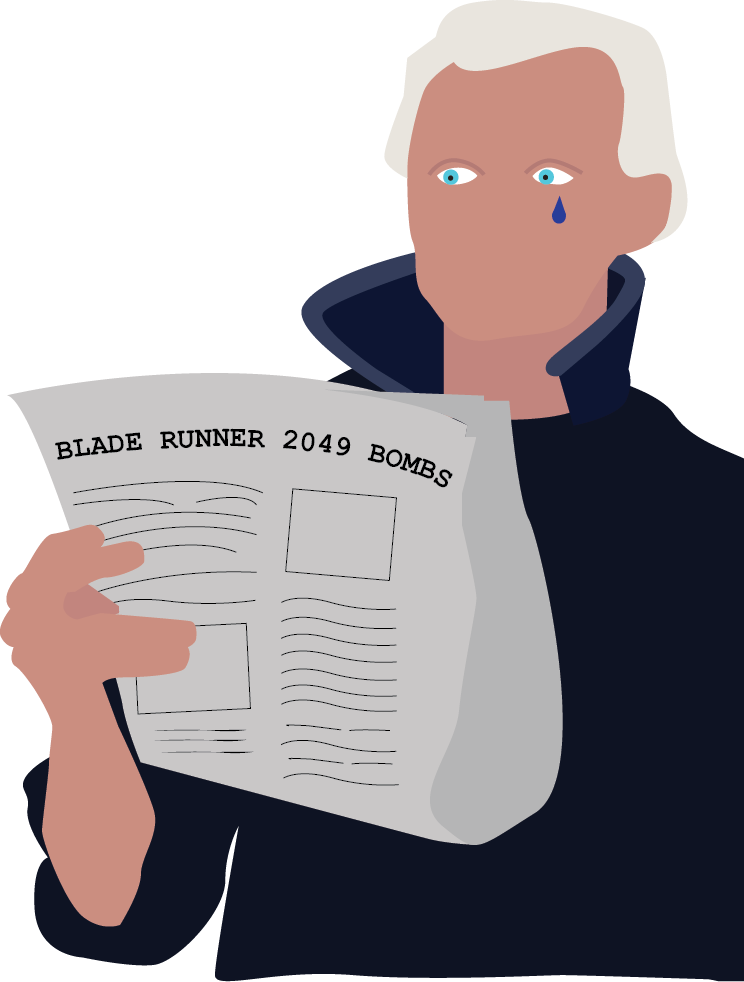Why the failure of “Blade Runner 2049” is a good thing
Ridley Scott’s “Blade Runner” entered theaters in 1982. The film was mostly ignored upon its release and, despite starring Harrison Ford at the height of his fame, failed to gross back its $28 million budget.
The long-awaited sequel “Blade Runner 2049” hit theaters two weeks ago and was expected to be a fall blockbuster. But to the surprise of every industry watcher, moviegoers ignored it, and the $160 million film debuted domestically to a paltry $30 million. But there was a way that Warner Brothers could have saved it—by leaving it well enough alone.
In its day, “Blade Runner” was saved by the booming industry of home video, as young people bought the VHS cassette and became inspired by the film. The dreary visuals were recreated in countless media. It received three different home video cuts, concluding with “The Final Cut” in 2007. Magazines and websites ranked it as the number one film in its genre. In 35 years, “Blade Runner” went from being an ignored Philip K. Dick adaptation to one of the most influential science fiction films of all time, which is a prime example of a cult classic.
Yet, as I scrolled through my Twitter feed last weekend, film fans began ranting that it was the end of times:
“Cinema as we know it is dead!”
“How could it lose the top spot to ‘Happy Death Day’?”
“What’s going to happen now?”
The easy answer would be that “2049” exists in the shadow of one of the most beloved films in cinema history. But exactly how many people have seen the original? When it’s a cult classic, the numbers aren’t necessarily clear.
Actor Bruce Campbell, a star of the fellow cult classic “Evil Dead” series, once wrote that a mainstream movie is seen 100 times by 1,000 people, while a cult movie is seen 1,000 times by 100 people. This would explain why there is an audience for a “Blade Runner” sequel, but that doesn’t mean the same thing for other moviegoers.
With this, I have to make a confession: I’ve never loved “Blade Runner.” It’s confusing, the screenplay treats its female characters poorly and Harrison Ford sleepwalks throughout the movie. There are things about it that I really like, though, including the main premise, set design and Rutger Hauer’s performance as Roy Batty. However, “2049” improves on all the flaws of the original, and is well worth seeing, and that makes the film’s failure so heartbreaking.
But maybe this failure is good.
“2049” entered a cultural landscape shaped by sequels and continuations. If it had performed well, Warner Bros. Entertainment Inc. could have made plans for a Marvel-esque cinematic universe, introducing more characters and telling further stories. But “Blade Runner” isn’t for everyone, and isn’t meant to be. “2049” might just join its predecessor in a place of admiration.
The failure of “2049” is a signal to studios that some properties aren’t meant for bigger things, and that sometimes beloved works are there to be beloved, not continued upon. And who knows? All those sequels could have been forgotten, as Roy Batty stated in the original, “lost in time. Like tears in rain.”














































